Equipment Guide For Underwater Macro Photography
With a DSLR camera, a macro lens and appropriate flat port will be needed. When selecting a lens, it’s important to take into account the focal length, minimum focus distance and working distance of the lens.
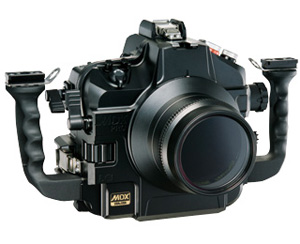
Working Distance and Minimum Focus Distance

Angle of View
As with all types of photography, the angle of view of the lens is something to consider when deciding which macro lens to get. The longer the focal length, the narrower the angle view, meaning the lens can see less of an area. With underwater macro photography this often effects how much background is in the image. When an image is photographed at life size (1:1 reproduction ratio, maximum magnification) with a 60mm lens, there will be more background included than an image shot with a 105mm lens. This obviously has both composition and subject selection implications. It’s easier to remove distracting backgrounds with a narrower angle of view by using a lens with a longer focal length like the 105mm lens, but you can shoot larger subjects with the 60mm lens.
Lastly, with shorter focal legnths you get a greater depth of field than with longer lengths. Depth of field refers to the area of an image that is in focus. If you are shooting the same subject at 1:1 magnification with both the 60mm and 105mm lenses at the same aperture, the image taken with the 60mm lens will have a greater depth of field, and more of the area in front of and behind the focal plane will be in sharp focus.
The Great Debate: 60mm vs. 100mm/105mm
So which is the best macro lens? The 60mm, 100mm / 105 mm, or 200mm? (the 200 mm range is considered much more of a specialty lens. See footnote below)
For most photographers choosing their first macro lens, the debate is between the 60 mm and the 100mm or
105mm lens. Obviously, there is no right answer because different lenses have different purposes. To recap, with the 60mm lens you can focus very close to the subject, but you have to be very close to achieve maximum magnification in comparison with the 100mm / 105mm lens.
It’s often said that the 100mm / 105mm is better for shooting smaller animals. The reasoning is not because with the 105mm it’s possible for better magnification, as mentioned both lenses can produce an image with the subject being the exact same size, but because it’s often times a lot harder or not possible to get close enough to the subject with the 60mm to get that level of magnification. The 100mm / 105mm also has a tighter angle of view.
The 60mm has a wider angle of view, so you can capture larger (larger is all relative with macro, you still can't shoot manta rays with the 60mm), subjects at closer distances. With the 100mm / 105mm you may not be able to fit a larger subject in the frame without getting so far away that your strobes can’t properly light the subject. However, with the 60mm, you may not be able to fill the frame with the subject as much as desired even at 1:1 magnification.

Also, if you are not experienced photographer, the 100mm / 105mm lens can be difficult to focus. When using auto-focus, the 100mm / 105mm tends to "search" more, meaning its harder to get it to focus. Additionally, the depth of field is smaller, so it might be harder to get the area you want to be in focus sharp. The 60 mm is considerably easier to focus and can be much less frustrating for beginners. Most professional underwater photographers own both, but seemingly favor the 100mm / 105mm. The 100mm/105mm allows you to fill the frame with small subjects. Consider the 105mm if you know that shooting small things is for you, as you can learn to focus with it. That said, the 60mm is also a great, professional lens and the choice is yours.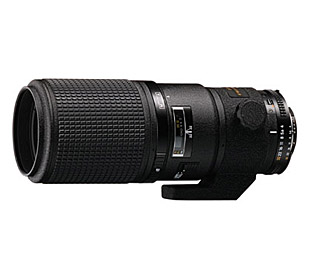
Note on the 200 mm lens: A 200 mm lens requires shooting far away from the subject, increasing the amount of
water between the lens and subject, which decreases the quality of the image. However, because you can achieve high magnification of the subject at these distances, it can be a perfect lens for extremely skittish animals like those pesky garden eels. So if you have a specific subject in mind that you know to be particular skittish, consider the 200 mm lens. Of course, make sure that your housing brand offers a port for it!
Ports
In addition to lenses you will need the correct lens port. Macro ports are flat ports (as opposed to much more expensive wide angle dome ports) that are specifically made for each lens since each lens is a different shape and size. Longer lenses will often require an extension ring that sits between the port and housing body.
Strobes
Lastly, you will need to use external strobes to properly light your macro subjects. Some source of light is essential in macro photography because of the small apertures used to produce a decent depth of field required when shooting high magnification. For the most part, most modern strobes will be acceptable for macro photography. While it’s possible to light some small macro subjects with a point and shoot cameras internal flash, it’s not advised. The location of the flash right above the lens means that backscatter becomes a big issue and, on top of that, the flash itself is just not very good for underwater photography purposes. The addition of external strobes will greatly increase image quality. It’s possible to light many small macro subjects with just one external strobe, and some people opt for this route because of either pricing or convenience. However, the addition of second strobe will help your images immensely which will be discussed in the next section.
Continue to Lighting Guide For Underwater Macro Photography
RELATED CONTENT
Featured Photographer

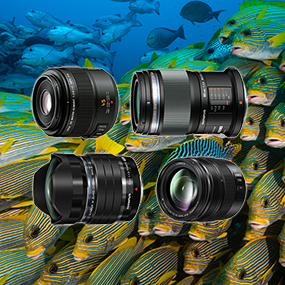


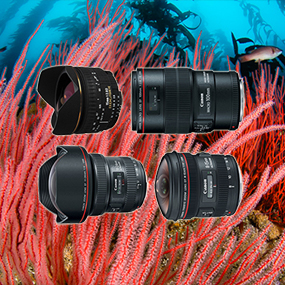
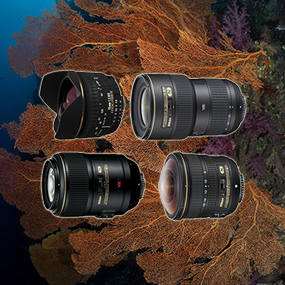
 Antarctica
Antarctica




